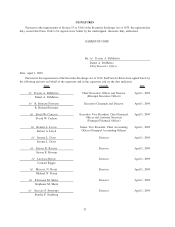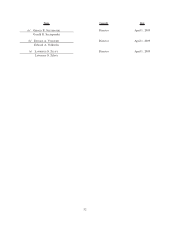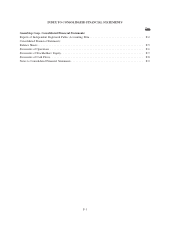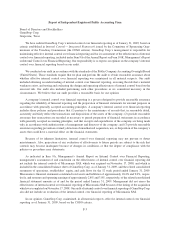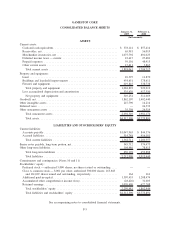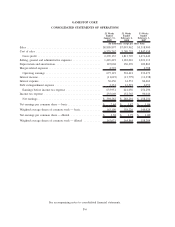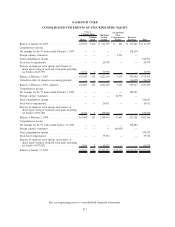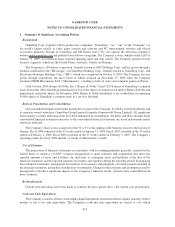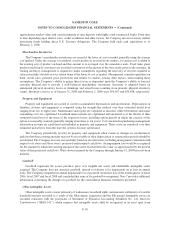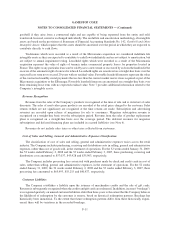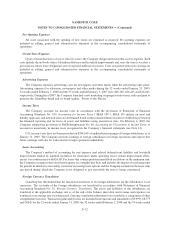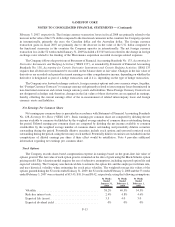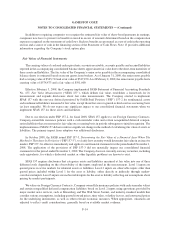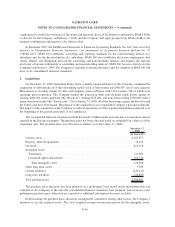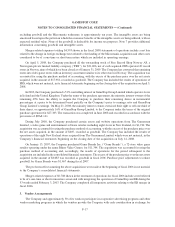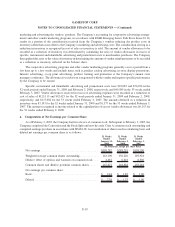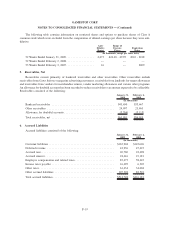GameStop 2008 Annual Report Download - page 76
Download and view the complete annual report
Please find page 76 of the 2008 GameStop annual report below. You can navigate through the pages in the report by either clicking on the pages listed below, or by using the keyword search tool below to find specific information within the annual report.
GAMESTOP CORP.
NOTES TO CONSOLIDATED FINANCIAL STATEMENTS
1. Summary of Significant Accounting Policies
Background
GameStop Corp. (together with its predecessor companies, “GameStop,” “we,” “our,” or the “Company”), is
the world’s largest retailer of video game systems and software and PC entertainment software and related
accessories primarily through its GameStop and EB Games stores. We also operate the electronic commerce
website www.gamestop.com and publish Game Informer magazine. The Company’s stores, which totaled 6,207 at
January 31, 2009, are located in major regional shopping malls and strip centers. The Company operates in four
business segments, which are the United States, Australia, Canada and Europe.
The Company is a Delaware corporation, formerly known as GSC Holdings Corp., and has grown through a
business combination (the “EB merger”) of GameStop Holdings Corp., formerly known as GameStop Corp., and
Electronics Boutique Holdings Corp. (“EB”), which was completed on October 8, 2005. The Company also has
grown through acquisitions, the most recent of which occurred on November 17, 2008 when the Company
purchased SFMI Micromania SAS (“Micromania”), a leading retailer of video and computer games in France.
Until October 2004, Barnes & Noble, Inc. (“Barnes & Noble”) held 72,018 shares of GameStop’s common
stock. In October 2004, GameStop repurchased 12,214 of the shares of common stock held by Barnes & Noble and
immediately retired the shares. In November 2004, Barnes & Noble distributed to its stockholders its remaining
59,804 shares of GameStop’s common stock in a tax-free dividend.
Basis of Presentation and Consolidation
Our consolidated financial statements include the accounts of the Company, its wholly-owned subsidiaries and
its majority-owned subsidiary, GameStop Group Limited (formerly Gamesworld Group Limited). All significant
intercompany accounts and transactions have been eliminated in consolidation. All dollar and share amounts in the
consolidated financial statements and notes to the consolidated financial statements are stated in thousands unless
otherwise indicated.
The Company’s fiscal year is composed of the 52 or 53 weeks ending on the Saturday closest to the last day of
January. Fiscal 2008 consisted of the 52 weeks ended on January 31, 2009. Fiscal 2007 consisted of the 52 weeks
ended on February 2, 2008. Fiscal 2006 consisted of the 53 weeks ended on February 3, 2007. The Company’s
operating results for fiscal 2008 include 11 weeks of Micromania’s results.
Use of Estimates
The preparation of financial statements in conformity with accounting principles generally accepted in the
United States of America (“GAAP”) requires management to make estimates and assumptions that affect the
reported amounts of assets and liabilities, the disclosure of contingent assets and liabilities at the date of the
financial statements and the reported amounts of revenues and expenses during the reporting period. In preparing
these financial statements, management has made its best estimates and judgments of certain amounts included in
the financial statements, giving due consideration to materiality. Changes in the estimates and assumptions used by
management could have significant impact on the Company’s financial results. Actual results could differ from
those estimates.
Reclassifications
Certain reclassifications have been made to conform the prior period data to the current year presentation.
Cash and Cash Equivalents
The Company considers all short-term, highly-liquid instruments purchased with an original maturity of three
months or less to be cash equivalents. The Company’s cash and cash equivalents are carried at cost, which
F-9


